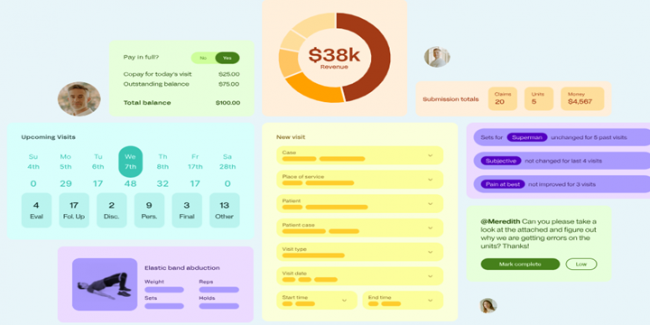Table of Content
Traffic congestion is no longer just a transportation issue — it’s an economic, environmental, and productivity crisis. In 2024, drivers in major U.S. cities lost an average of 51 hours in traffic delays (INRIX Global Traffic Scorecard). Globally, congestion drains an estimated $1.4 trillion annually through wasted fuel, lost time, and logistics inefficiencies (World Economic Forum).
These losses have triggered a global shift toward Intelligent Transport Systems (ITS) — technology-driven mobility frameworks that make transportation networks smarter, more coordinated, and adaptive in real time.
This guide breaks down what ITS is, how it works, and why governments, logistics companies, and software developers see it as the backbone of future mobility.
1. What Is an Intelligent Transport System (ITS)?
An Intelligent Transport System (ITS) is an integrated ecosystem of technologies — sensors, software, data platforms, analytics, and communication networks — designed to monitor, manage, and optimize transportation operations in real time.
In simple terms:
✔️ ITS turns roads, vehicles, and infrastructure into interconnected digital systems
✔️ allowing cities and fleets to respond to traffic conditions as they happen, not after they cause disruption
ITS is not a single tool — it’s a convergence of multiple technologies that work together to reduce congestion, improve mobility, and enhance safety.

2. Why ITS Matters in 2025: The Problem It Solves
Congestion is skyrocketing
Urban populations are expected to grow by 2.5 billion by 2050 (UN-Habitat), placing enormous strain on existing roads.
Economic losses are severe
● U.S. congestion cost: $120+ billion per year
● EU congestion cost: €110 billion per year
● Logistics delays increase supply chain costs by up to 20% (OECD Transport Outlook)
Environmental impact is worsening
Road congestion contributes to:
● 20% of urban CO₂ emissions
● 40% of transport-sector energy waste
Old traffic systems can't keep up
Traditional traffic signals rely on fixed timing and manual adjustments — an approach fundamentally incompatible with real-time multi-modal traffic.
ITS solves this by creating a responsive ecosystem where data continuously drives decisions.
3. Core Components of an Intelligent Transport System
ITS technology typically includes four foundational layers:
1. IoT Sensors & Smart Infrastructure
These gather real-time data on:
● vehicle speed
● road occupancy
● weather conditions
● pedestrian flows
● incidents or hazards
Examples:
● inductive loop sensors
● connected cameras
● vehicle telematics
● smart traffic lights
By 2030, over 60% of global road infrastructure is expected to integrate IoT devices.
2. Edge Computing for Rapid Decision-Making
Edge nodes process data near the source to reduce latency — crucial for:
● accident detection
● adaptive signal control
● automated rerouting
Latency is reduced from seconds to milliseconds, enabling faster traffic responses.
3. AI & Predictive Analytics
AI models identify patterns, detect anomalies, and predict congestion before it happens.
Cities using AI-powered control:
● reduce travel times by 15–25%
● cut intersection delays by 30–40%
(According to European ITS Directive impact assessments)
4. Integration & Interoperability Platforms
The most important — and most overlooked — layer.
These platforms unify data from:
● city infrastructure
● logistics fleets
● public transit
● emergency services
● weather systems
Without integration, as studies from the London School of Economics reveal, transport data becomes “informationally isolated”, leading to local optimizations but global inefficiencies.
ITS only becomes intelligent when systems communicate and collaborate.
4. Key Applications of Intelligent Transport Systems
ITS is used across public, private, and industrial mobility ecosystems.
● Adaptive Traffic Signal Control
Signals adjust dynamically to real-time demand.
Singapore’s smart signals reduced peak travel time by 12–20%.
● Connected Vehicle Ecosystems (V2X)
Vehicles communicate with:
● other vehicles (V2V)
● road infrastructure (V2I)
● pedestrians (V2P)
Expected to reduce crash rates by up to 80% (U.S. DOT).
● Smart Logistics & Route Optimization
Freight operators use ITS to:
● avoid congestion
● minimize idle time
● align with dynamic city signals
Cities integrating freight ITS report up to $6 billion annually in efficiency gains (OECD).
● Public Transit Optimization
Smart scheduling and demand-responsive buses cut fleet operational costs by 10–20%.
● Incident & Emergency Management
Real-time hazard detection reduces emergency response delays by 25–60%.
5. How ITS Reduces Congestion: The Data Advantage
Traditional traffic systems operate based on pre-set rules.
ITS operates based on live data.
Here’s how ITS eliminates bottlenecks:
✔ Predictive congestion modeling
AI forecasts congestion minutes or hours in advance.
✔ Adaptive traffic flow orchestration
Signals, lanes, and routes adjust dynamically to real-time conditions.
✔ Fleet synchronization
Logistics fleets automatically reroute based on city ITS updates.
✔ Multi-modal balancing
Traffic flow considers pedestrians, cyclists, public transit, and freight — not just cars.
✔ Reduced information latency
The faster data moves, the faster cities can respond.
A major study (Cheng–Pang–Pavlou) found that poor data flow between systems contributes more to congestion than inadequate physical infrastructure.
6. The Software Architecture Behind ITS (Often Overlooked)
The future of ITS relies less on hardware and more on scalable software frameworks, including:
● Microservices Architecture
Allows modular, upgradable transport systems.
● API-Driven Integration
Ensures data flows between:
● city traffic systems
● logistics platforms
● autonomous fleets
● legacy infrastructure
● AI & MLOps Pipelines
Keeps predictive models accurate through continuous retraining.
● Cloud & Edge Hybrid Orchestration
Balances speed (edge) with scalability (cloud).
● Federated Data Systems
Enable collaboration without compromising privacy.
In other words:
ITS succeeds only when supported by strong software engineering.
7. Real-World Examples of ITS Success
Los Angeles
● 4,500+ smart signals
● AI reduced intersection wait times by 30%
Singapore
● Smart Mobility 2030 integrates transit, signals, and enforcement
● Achieved 20% faster commute times
Barcelona
● Smart sensors reduced traffic-related pollution by 21%
London
● AI-driven TfL systems reduce delay by up to 40% during incidents
8. Challenges ITS Must Overcome in 2025
1. Data fragmentation
Different systems don’t naturally communicate.
2. Legacy infrastructure
Cities need interoperability — not full replacement.
3. Cybersecurity risks
Connected mobility requires zero-trust security models.
4. High initial investment
Though long-term returns far outweigh upfront costs.
5. Standards & governance
Lack of unified global ITS standards slows adoption.
9. The Future of ITS: What’s Next?
By 2030, ITS will evolve toward:
● Autonomous traffic ecosystems
Signals adapting to autonomous vehicle behavior in real time.
● Mobility-as-a-Service (MaaS) integration
All modes unified into one intelligent platform.
● AI-powered digital twins
City-scale simulations predicting traffic days ahead.
● Hyperconnected logistics corridors
Real-time coordination across ports, warehouses, and fleets.
● Fully decentralized, cloud-native ITS networks
More resilience, faster decisions.
In the near future, cities won’t just manage traffic — they’ll predict and orchestrate it.
Conclusion: ITS Is No Longer Optional — It’s Foundational
With congestion costing economies billions, ITS has shifted from a niche innovation to a global necessity. It transforms transportation by turning raw data into real-time, actionable intelligence — creating safer, cleaner, and more efficient mobility ecosystems.
For governments, enterprises, and developers, the message is clear:
The future of transportation will not be built by asphalt alone — it will be programmed, integrated, and intelligently orchestrated.
Post Comment
Be the first to post comment!




